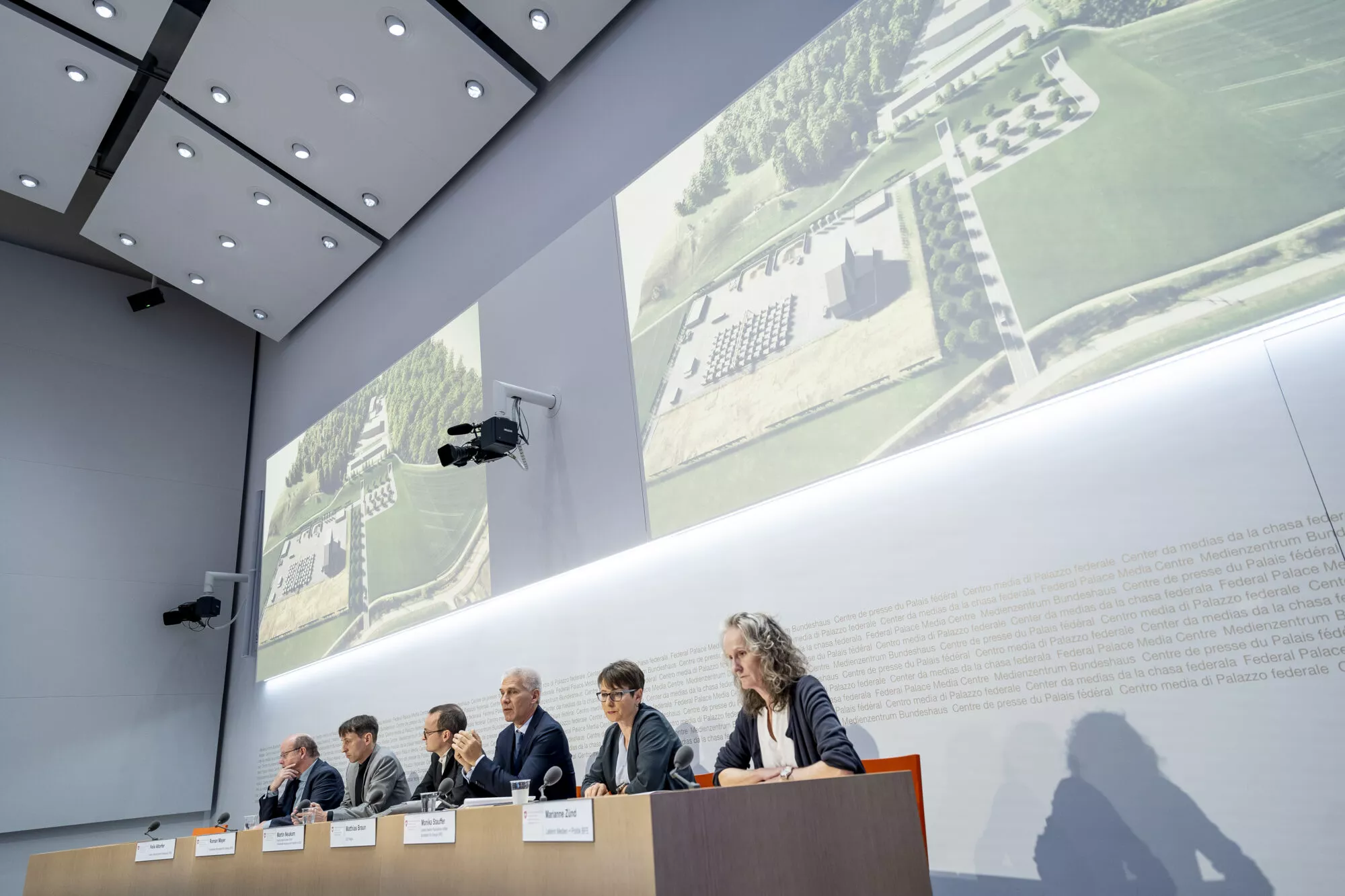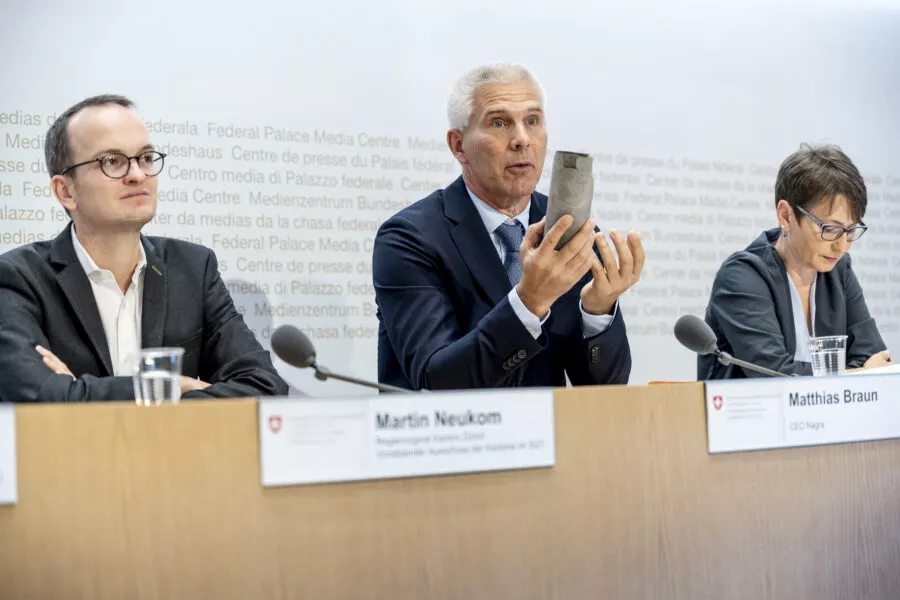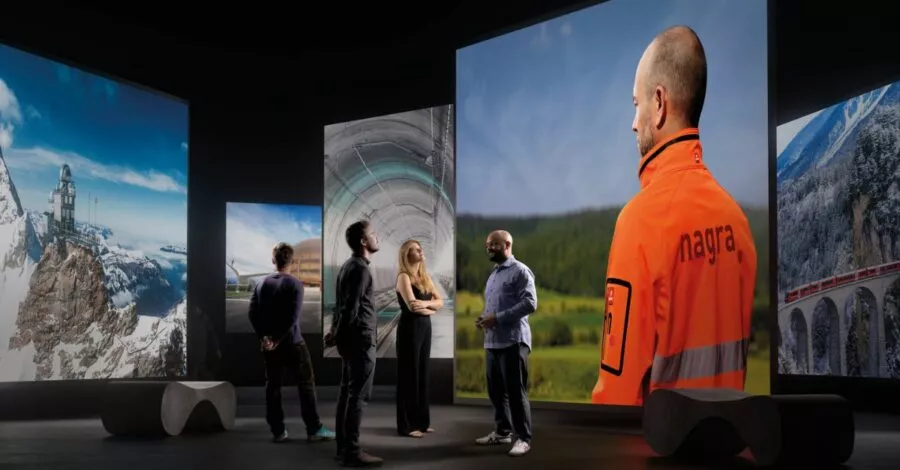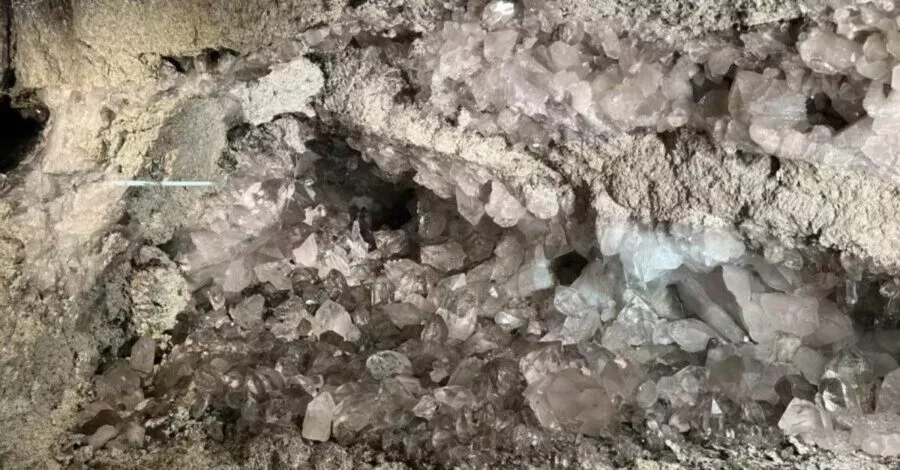
Nagra proposes “Nördlich Lägern” as the site for a repository
Nördlich Lägern is the safest site for a deep geological repository: here, the rock deep below the surface best confines the radioactive waste for a very long time. Nagra’s investigations demonstrate this. The siting proposal is an important milestone in the project of the century of deep geological disposal.
Nagra’s siting proposal has been eagerly anticipated. Last Saturday, it was already officially announced: Nördlich Lägern is the site with the largest safety reserves. This Monday, Nagra CEO Matthias Braun presented the details of the siting proposal at the media conference in Bern. The proposal is based solely on scientific criteria and decades of research.

Two cantons, one project of the century
The Nördlich Lägern siting region is located in the Zürcher Unterland (in the northern part of Canton Zürich) in Northern Switzerland. The entrance to the repository, the so-called surface facility, is to be constructed in the “Haberstal” area in the community of Stadel in Canton Zürich. Nagra plans to construct the encapsulation plants at the already existing Zwilag interim storage facility in the town of Würenlingen in Canton Aargau.
“The repository centres around the Opalinus Clay”, said Nagra’s CEO, Matthias Braun, to a media audience. This is the rock in which the repository will be constructed. The inconspicuous rock is 175 million years old and was investigated by Nagra in great detail. The resulting knowledge of the entire history of this rock over the past 175 million years “allows for robust predictions reaching far into the future”, continued Braun. All three siting regions have a layer of Opalinus Clay suitable for the construction of a deep geological repository, but Nördlich Lägern has the largest safety reserves.
Which site is Nagra proposing and why? Four questions for Nagra CEO Matthias Braun
Geology is the decisive factor
Experts worldwide agree that a deep geological repository is the safest option for the long-term disposal of radioactive waste. For this reason, this solution was anchored in Swiss legislation. Safety criteria are at the core of the site selection process: the safety of humans and the environment has the highest priority, and this is why geology is the decisive factor.
Extensive investigations have shown that, in Nördlich Lägern, the quality of the rock is highest and it best confines the radioactive waste – not only today, but also in the distant future. While the landscape at the earth’s surface will evolve, the repository deep underground in Nördlich Lägern will be protected as the rock is most stable there. Nördlich Lägern has the largest underground area suitable for construction, thus providing the greatest flexibility for the layout of the repository.
Nagra will now prepare the general licence applications, which it expects to submit to the federal government in 2024. The authorities and expert bodies will review these applications before the Federal Council and Parliament make their decision. Should this decision be put to a national referendum, the Swiss voters will have the final say. Another thirty years or so will pass before Nagra can start waste emplacement operations.
Similar articles
What does Switzerland think about the deep geological repository?
Switzerland is confident that it can realise the project of the century of deep geological disposal. A recent, representative survey shows that acceptance is high across the whole of Switzerland and in the affected region.



